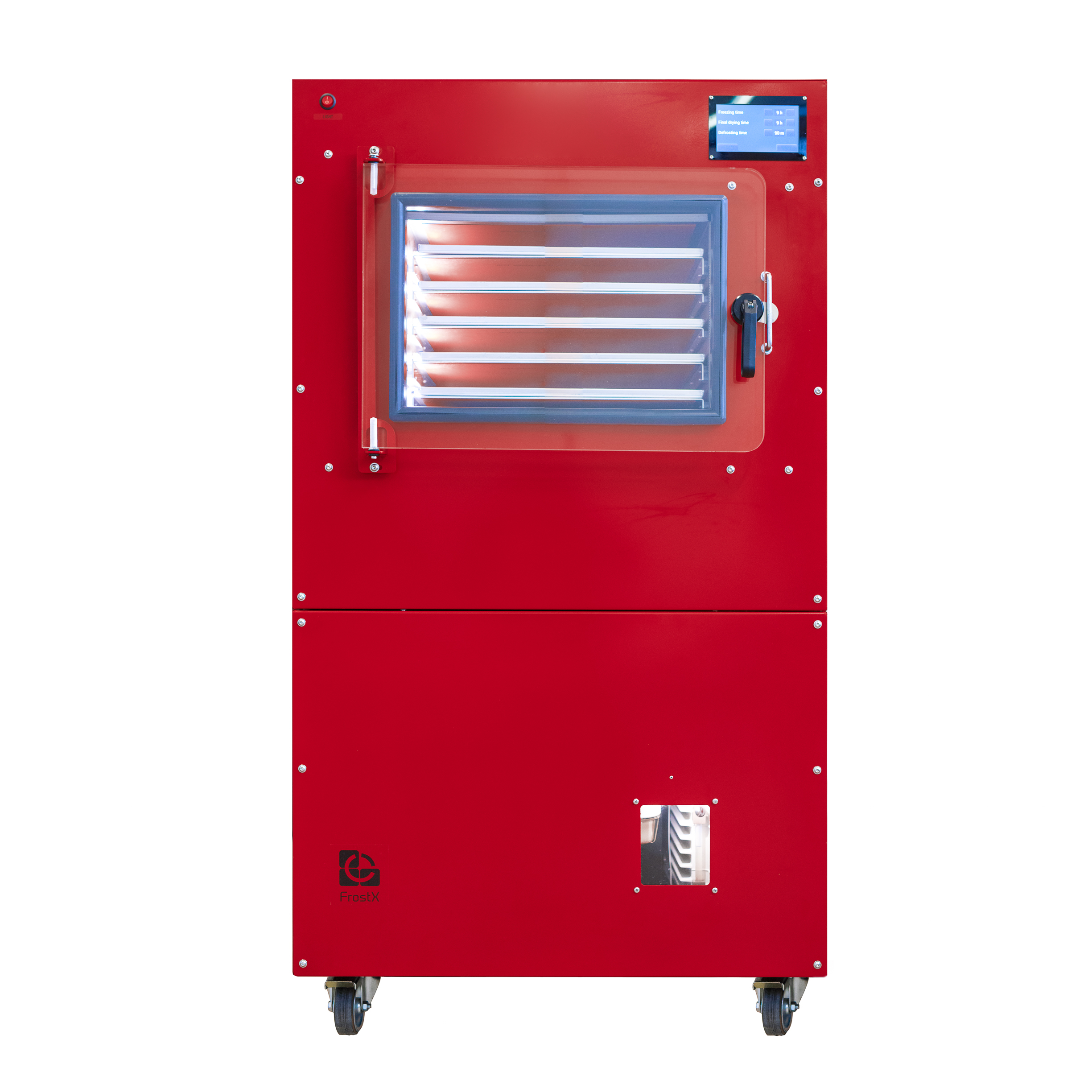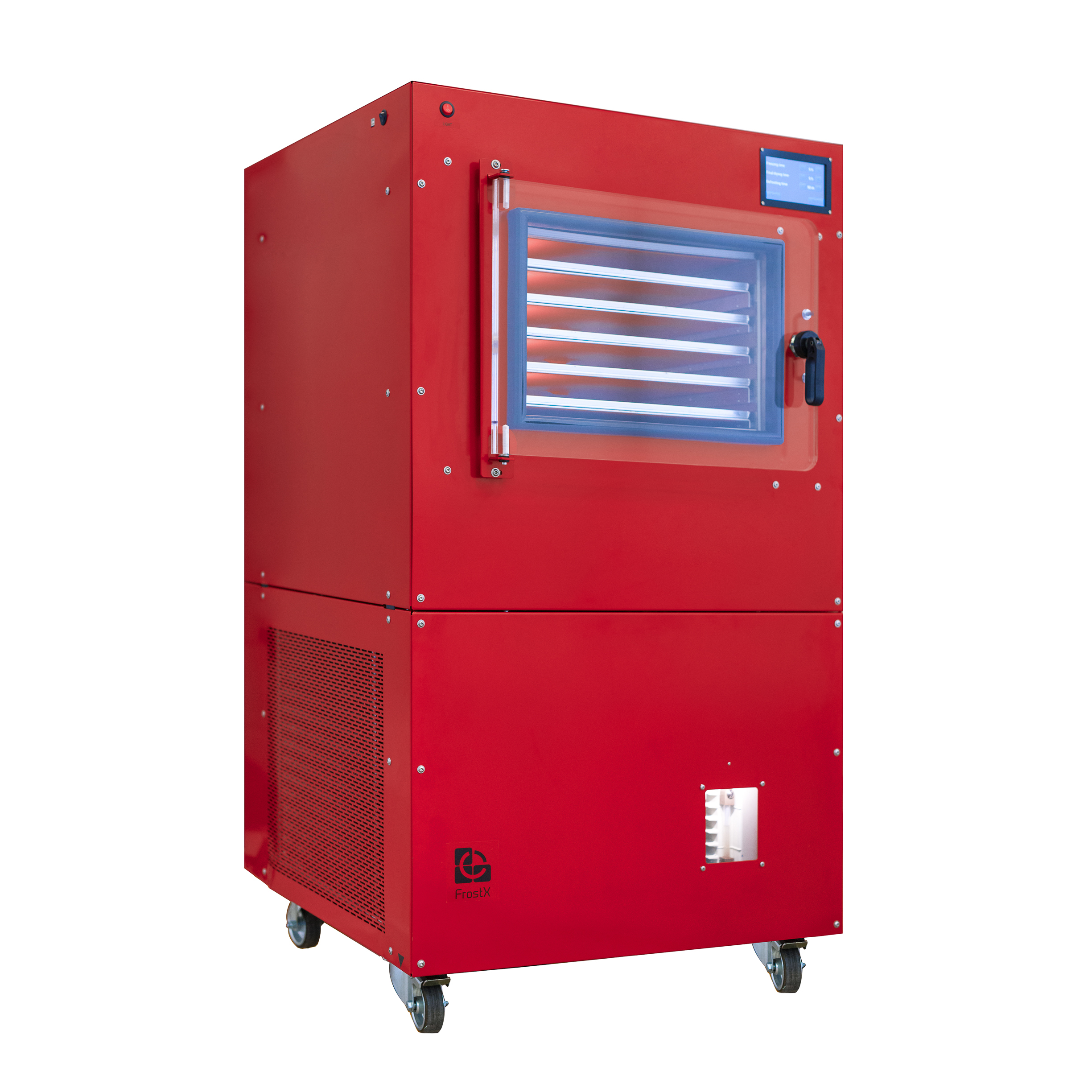
Freeze-drying – how to prepare products? It’s simple, just remember a few rules.
Freeze-drying is a process that preserves the taste, nutritional values, and appearance of food for a long time. However, the key to success is the proper preparation of products before placing them in the freeze dryer. This affects not only their quality but also the duration of the freeze-drying process, which also means lower energy consumption.
Mainly fruits, vegetables, meats, ready meals, and even processed foods like store-bought sweets, cheeses, and cold cuts are freeze-dried.
Remember, the quality of the input product directly influences the final quality of the freeze-dried items!
How to prepare plant-based products for perfect freeze-drying fruits and vegetable freeze-dried products?:
- Selection: Choose fresh, ripe, high-quality products. Avoid damaged or overly ripe products.
- Washing: Thoroughly wash each product to remove contaminants. More popular are baths in water with baking soda – mixing a liter of water with a tablespoon of baking soda, then immersing the fruits and vegetables in this solution for about 15 minutes before rinsing them under running water. This helps remove many contaminants, including pesticides.
- Preparation: Cut most fruits and vegetables into smaller pieces to facilitate water removal during the process, thereby speeding up freeze-drying. Consider the final visual effect you want. For delicate fruits like raspberries or strawberries, freeze-drying them whole is possible, but apples and pears should be cut. Similarly, for fruits with thicker skins – cherries or blueberries – cutting them in half is better if the visual aspect is not a concern, as it speeds up the end product.
All fruits and vegetables, both raw and thermally processed, are suitable for freeze-drying.
Can you get freeze-dried meat? Yes! Prepare cold cuts and seafood too.
- Meat should be washed and cleaned of bones and excess fat, then cut into smaller pieces for even drying. Both raw and thermally processed meat can be freeze-dried.
- Cold cuts, like other meats, should be sliced.
- Seafood should be washed and laid out on the freeze dryer tray.
Transform ready meals into freeze-dried food easily.
- Ready meals, such as soups or stews, should be cooled beforehand. Then they are laid out evenly on the tray. If you have several different dishes, a good idea is to freeze them earlier on separate trays, and then transfer the frozen products onto one large tray – this saves space and prevents the dishes from mixing.
Processed food, so how to obtain, among others, freeze-dried sweets and famous freeze-dried gummies?
- This is definitely the simplest type of product – you buy, unpack, lay out on the tray, and that’s it.
Juices, purees, yogurts – is freeze-drying suitable for liquid consistencies?
- Yes, liquid products can also be freeze-dried, but it’s recommended to first freeze them, for example in ice cube trays, to achieve interesting shapes and consistency after freeze-drying.
Special notes regarding product preparation for freeze-drying:
- Pre-freezing in the freezer: Recommended for all products to shorten the freeze-drying time, it may also help maintain the shape and structure of the products.
- Freeze-drying fresh, unfrozen products: Some types of freeze dryers, like those from FrostX, allow this option. It’s very useful, especially if you can’t freeze beforehand or simply want to freeze-dry fresh products.
- Silicone mats: Use to prevent sticking of products, especially those sticky or moist.
- High-fat products: such as butter, peanut butter – freeze-drying is possible, but it’s difficult due to the high fat content, which will affect the appearance, quality, and durability of the final product.
By following these tips, you can maximize the benefits of freeze-drying, preserving the best properties of stored food. Proper preparation is the key to effective freeze-drying and enjoying high-quality products for a long time.
















